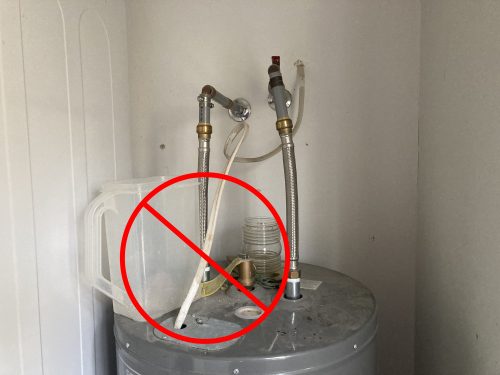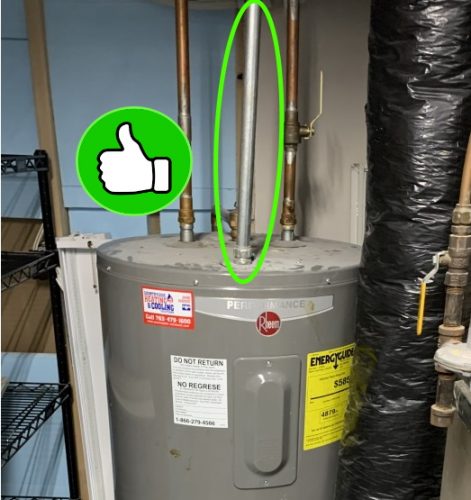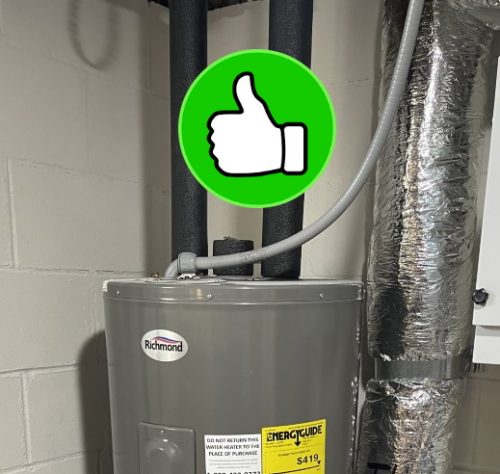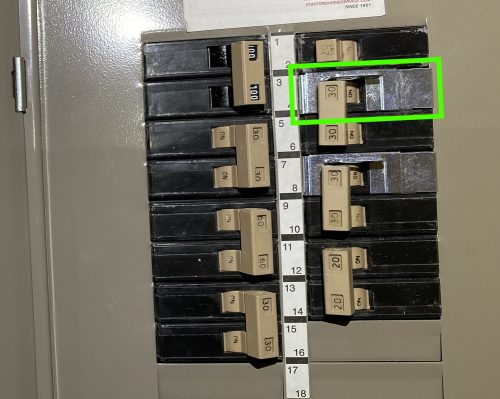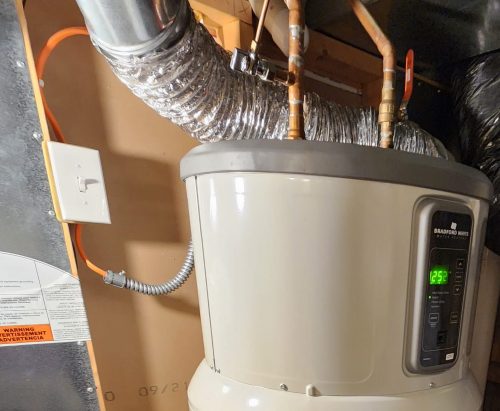As a home inspector, I look for three main things when I inspect the wiring to an electric water heater: protection of the wires, a service disconnect, and proper circuit size. Today I’ll explain all three.
Protection of wires
The wires coming into a water heater must be protected from physical damage in accordance with the National Electric Code (NEC) section 334.15. This code section doesn’t specifically call out water heaters, it just says that you need to protect wires that could be damaged. It’s up to the Authority Having Jurisdiction to decide exactly what this means. In some parts of the country, leaving the wires unprotected is standard. But here in Minnesota, we do not tolerate that kind of tomfoolery.
This is typically done with rigid metal conduit or flexible conduit.
Service Disconnect
There must be a service disconnect switch within sight of the water heater or a lockout at the circuit breaker. A lockout at a circuit breaker is usually a small piece of metal that fits over a circuit breaker and allows someone to lock the circuit breaker in the off position. This is done so someone in a different room won’t accidentally turn on the power while someone is working with wires that are supposed to be de-energized. It’ll look like this:
While this is very easy, a service disconnect in sight of the water heater works fine too. This could be a circuit breaker if it’s in the same room or a simple 240-volt switch on the wall, as pictured below.
Circuit sizing
Electric water heaters typically have two 4500-watt heating elements; one high, and one low. They take turns heating, so you’ll never have a 9000-watt load. If you divide 4500 watts by 240 volts, you get 18.75 amps. So it seems like a 20-amp circuit should be fine… but there’s more to it than that. Section 422.13 of the NEC says we need to size this circuit at 125 percent of the rating. If we multiply 18.75 x 1.25, we get 23.44 amps. That means you must step up to a 30-amp circuit with 10-gauge wires.
In short, this is why 240-volt electric water heaters need 30-amp circuits. Obvious exceptions would be for smaller, 120-volt water heaters.

